- Home
- James Patterson
Private Vegas Page 5
Private Vegas Read online
Page 5
He greeted the jury, then said, “I’m going to make this short and sweet.
“My client, Mr. Del Rio, is entirely innocent. He did not beat Ms. Carmody. Didn’t lift a hand to her, had no reason to, and never would.
“On the thirteenth of June, having not had contact with Ms. Carmody in six months, Mr. Del Rio called to tell her that he had come across a small camera that she had left in his house way back before they broke off their relationship.
“Ms. Carmody said, ‘I thought I’d lost that camera. Well, yes, I’d like to have it back.’
“And Mr. Del Rio said, ‘When would be good for you?’
“They agreed on a time for the return of this little camera, so the next evening, Mr. Del Rio went to Ms. Carmody’s house, where a witness saw Ms. Carmody open the door for Mr. Del Rio, who then entered the house.
“Once he was inside, Ms. Carmody made tea, and these two people had a polite conversation in the parlor lasting about fifteen minutes and consisting of pleasantries and the return of the Coolpix. Mr. Del Rio never touched Ms. Carmody, unless you count the cheek kisses that were exchanged when Mr. Del Rio left Ms. Carmody.
“After Mr. Del Rio left Ms. Carmody’s home, he went to his own place in Venice, took a six-pack out of the fridge, and spent the rest of the evening watching The Fog of War on the Sundance channel, alone. At eleven, he went to bed.
“That’s the end of the story.
“Or at least, it should be.
“But when Ms. Carmody was questioned by the police after she had suffered a traumatic head injury, she identified Mr. Del Rio as her attacker, a statement that cannot be corroborated.
“In legal circles, this is referred to as he-said-she-said, and that, ladies and gentlemen, is really what this case is about.
“To continue with this story, late that night, approximately six hours after Mr. Del Rio left her, Ms. Carmody called an ambulance, and en route to the hospital, in this profoundly traumatized condition, she was interviewed by a detective, Sergeant Michael Degano.
“Sergeant Degano videotaped the interview with his phone camera, and when he asked Ms. Carmody who had beaten her, he showed her a picture of Mr. Del Rio, at which point she said Mr. Del Rio’s name.
“After that, she went into surgery, and she survived that surgery but has not spoken again; she has been in a coma ever since.
“It’s reasonable to ask, Why would Ms. Carmody name Mr. Del Rio as her attacker if he never touched her?
“I would suggest that she recognized his picture, and that she even remembered that he had come to visit her that evening. I would further suggest to you that Ms. Carmody had suffered so much injury to the brain that she was an unreliable witness for herself.
“So what happened then is that the police had their suspect, and they had no reason to look for another. They had testimony from the victim, and because Mr. Del Rio had been in Ms. Carmody’s house, they had evidence placing him at the scene.
“Mr. Del Rio had a cup of tea, and left his fingerprints and DNA. He was witnessed going into the house, but he wasn’t seen coming out.
“But in fact, he did leave Ms. Carmody’s house, and she was fine when they said good-bye. After that, while Mr. Del Rio was watching TV in his own house, someone went into Ms. Carmody’s house and attempted to kill her. Someone else did that. Not Mr. Del Rio.
“In the old days, there were colorful terms for the unfortunate sap who took the blame. He was called the dupe. The fall guy. The patsy.”
Rick didn’t like being characterized as a fool, but he thought Caine was doing a great job telling what had happened. Over at the prosecutor’s table, Dexter Lewis played with his pen like it was a drumstick: tat-tat-tat on the tabletop, just enough sound to draw the jury’s attention and, maybe, break Caine’s rhythm.
But Caine didn’t acknowledge the sound, didn’t look at Lewis at all. He walked to the jury box, all six foot three of Harvard-educated success story.
Caine said, “So now we have the whole short and not-so-sweet story. Someone beat Ms. Carmody. She had a subdural hematoma and an intracranial hemorrhage. She had brain damage, ladies and gentlemen, and during a semilucid moment as she was being taken by ambulance to the hospital, she named my client.
“But Mr. Del Rio didn’t lift a hand to Ms. Carmody.
“He’s the scapegoat, the designated fall guy. He didn’t beat up his friend Vicky. Someone set Rick up. Or Rick was at the wrong place at the worst possible time. We don’t know who attacked Vicky Carmody or why it happened.
“But this we know for sure: Rick Del Rio didn’t do it.”
PART TWO
SEPARATED AT BIRTH
Chapter 16
BY 11:20 A.M., two of Private’s top investigators, Emilio Cruz and Christian Scott, had rung fifteen doorbells on both sides of PCH, had talked to as many housekeepers and homeowners, had collected surveillance footage from security cameras, and were now reviewing the footage on their fleet-car computer.
Scotty was blond, lithe, had been a ballet dancer until he ruined his knees. He became a motorcycle cop with CHiPs and was eventually promoted to deputy sheriff. He was bright and motivated, and a very agile athlete.
Jack had brought him in as an investigator last year and was still floating him, pairing him with other investigators until he found him a partner.
Cruz was senior to Scotty.
First thing most people noticed about Cruz was his good looks: the black hair he wore pulled back in a ponytail, and his muscular build. Cruz was a former light-middleweight professional boxer, born and raised in the ’hood, and had highly developed street smarts. At age twenty-eight, after he retired from the ring with his brains intact, Cruz went to work as an investigator for LA’s district attorney, Bobby Petino.
Petino and Cruz were second cousins, and Petino had told Jack about this smart young investigator, saying that he thought Cruz had a dynamite future. Jack thought so too. He hired Cruz and teamed him up with Del Rio.
The partnership had stuck.
Cruz had wanted to be in court for his partner this morning, but he had to get a handle on who had firebombed Jack’s car.
Scotty downloaded the video to their hard drive, opened the file, said, “This is from the house across PCH. Camera one. Faces the road.”
“Roll it,” Cruz said to Scotty.
Scotty pressed Play. The camera was pointed across the highway, right at Jack’s house, and the angle took in the wall and the Lamborghini that Jack had parked outside his gate.
As they watched, cars flashed past on the road. Then, on the screen, a sedan with its high beams on came toward Jack’s house. And stopped.
Scotty reversed the clip, then forwarded it in slow motion.
“Whoa,” said Cruz. “Freeze that.”
It was too dark to see anything about the color or make of the car beyond the fact that it was a dark sedan, probably a Chevy. The time stamp read 4:27 a.m.
“I can’t read the plates at all,” Cruz said. “Not a single number.”
“Going to forward it now,” Scotty said.
The car in the center of the frame didn’t move, but a few other cars passed in the background, both directions. When the road was clear, a figure got out of the backseat and ran toward Jack’s Lambo.
“Here we go,” said Cruz.
Scotty tried to refine the image, but no amount of fine-tuning brought up the shadowy figure’s face. Still, they could see what he was doing: making chiseling motions on the rear flank of the car.
“He’s doing something with the gas tank,” said Scotty.
“I see that. And now where is he?” Cruz said.
Scotty reversed the clip, played it forward, saw the guy linger near the tank, then duck behind the car and disappear; he was out of sight for four seconds.
“I think he’s putting a charge under the chassis. This was planned,” Scotty said. “Well planned.”
“So was this a plan to torch a car?” Cruz mused. “Or a plan to
torch Jack’s car?”
“Look here, Emilio. There’s your fire,” Scotty said as flames flashed from beneath the car.
The dark figure fled from the Lambo and ran to the car waiting for him on the shoulder, which started up before he’d closed the rear door. A moment later, the sedan was gone, and the fire was lapping over the fenders of Jack’s quarter-million-dollar car.
“Shit,” said Cruz. “There’s Jack.”
The two men stared, mesmerized, as Jack came out of his house and watched his car burn. He just stood there until, moments later, the car went up and Jack was blown off his feet.
“Some kind of timing device. What do you think?” Scotty said, stabbing the Stop button.
Cruz said, “I think if there’s any evidence on the remains of that Lamborghini, it’s going to be a miracle.”
Chapter 17
DR. SCI ARRIVED at Private’s underground lot at just after two in the afternoon. He nosed his 1967 Spider into his spot, then extracted his silver Halliburton case from the passenger seat and went to the back door to Private’s forensic lab that ran underneath half of the building.
Standing at the entrance, Sci reached up, touched the mezuzah in the doorframe, then pressed his hand to the biometric plate. The doors opened, admitting him to the airlock, and closed with a whisper behind him.
The metal and explosives detectors scanned him, and after Sci had spent twenty seconds under the UV light, the second set of doors opened and he stepped into the clean, cool, well-lit lab.
He paused inside the entrance, did a quick check of the various stations around the perimeter of the large room. Criminologists wearing lab coats worked in their bays, which were equipped with the best forensic tools in the world.
Sci waved to Mo-bot, who was crossing the room with a sound tech, then entered his glass-walled office at the hub. His computer recognized him and flashed on. He set his briefcase on a tabletop, removed the flask he was transporting, and read his e-mail.
About ten years earlier, when Dr. Sci, whose given name was Seymour Kloppenberg, was twenty, he had graduated from MIT with a PhD.
LA County, still recovering from the humiliation of the O.J. Simpson trial, had refurbished its forensic lab to the tune of a hundred million dollars, and Dr. Sci was hired right out of school.
Sci was rotated around the numerous forensic disciplines—DNA, trace analysis, toxicology, ballistics—so he could find his niche. But during this training program, Jack Morgan heard about Sci and offered him a job as chief forensic scientist and head of Private’s lab. He told Sci that he wanted the lab to become a profit center.
Sci had been dubious. No independent lab could match the county’s facilities.
Jack said, “It’s yours to outfit, Sci. I want only the best of everything. And I’ll make you an equity partner.”
Sci was sold on this rare and terrific opportunity. He equipped and staffed Private’s new lab one division at a time. He cut no corners. And soon, law enforcement departments from all over the country hired Private’s lab when they required impeccable work done fast.
Of course, Private’s clients came first.
Sci had just returned from the LA County lab with a sample from the gas tank of Jack’s impounded car. He also had a digital chip loaded with 3-D images from all angles of the remains of the Lambo, as well as a preliminary report from the head of the LA Regional Crime Lab, a man Sci had worked with for years.
Sci put the disk into his computer, then made a slide of the gunk from Jack’s car. He loaded the slide into the new Olympia 9000 gas chromatograph/mass spectrometer and watched it start its run.
As the machine worked, Sci called psychologist and senior investigator Dr. Justine Smith on the interoffice line.
Her image came up on the screen. She was wearing a tailored black-and-white-checked jacket, a silk blouse, and a strand of rough-cut rubies around her throat. Her hair was twisted up and held loosely in a few combs, making her look like a figure in a painting by Botticelli.
Dr. Sci had a crush on Justine, but it was safe to say that he was only one of many men who were crazy about her.
He said, “Justine, you were there. What happened this morning?”
“I wish I had some neat observation, but all I saw was the fire, Sci. That’s it.”
“Let’s go over it anyway.”
“Whatever I can do to help,” she said.
Chapter 18
JUSTINE’S OFFICE WAS on the fourth floor, fifteen seconds by elevator above Sci’s lab. Sci could have gone upstairs or asked Justine to come down, but generally speaking, Sci found virtual contact as informative and satisfying as meeting IRL. And it was usually faster.
He said to Justine’s image, “What’s the first thing you remember?”
“Well, I was asleep, when suddenly Jack bolted up in bed. It was an abrupt movement. He gets nightmares, you know.”
“Yes. He’s told me.”
“Anyway, I thought he was dreaming, but then I saw light on the wall. And I smelled smoke. Something was burning.”
“Did you hear an explosion?”
“Not then. Jack told me to get dressed and he ran out to where he’d parked the car. I ran after him. It took me a moment to realize that the fireball was Jack’s car.
“And then, there was a blast,” Justine said, “and that knocked Jack off his feet. He’s not hurt, Sci, but I worry about what this means. If it was personal, was blowing up the car the whole point? Or was it a warning? You know, at any given moment, a lot of people are pissed off at him.”
The machine at Sci’s right blinked to show that the analysis was complete, but it also flashed the words No match.
“This is odd,” Sci said, turning the screen so that Justine could see the display. “See, the gas tank was BLEVE’d. Blown out, so the explosive was in the tank. However, our spectrometer is calling the explosive ‘unknown.’”
“An unknown chemical? That has to be a first.”
“I’m going to have to research this compound, but I can tell you what it was packaged in. Latex.”
“Like a glove?”
“Or like a condom. Yep. The machine is telling me we’ve got some spermicidal lubricant here.”
“Let me get this right. Someone put explosives in a condom? Then put the condom in the gas tank?”
“Correct. A charge was set under the car to start the fire, and when the fire got hot enough, it melted the latex. That put this chemical in contact with the gas, and boom. That’s my theory, anyway. That’s why there was delay on the explosion. The latex was a delay device.”
“And what does that tell you?”
“This is the kind of thing a teenager would think up. A teenager with access to a car and a total disregard for life.”
Chapter 19
MY OFFICE OVERLOOKS downtown LA, and the late-afternoon sun was high and hot, glancing off the glassy skyscrapers across the street, blazing over the fast-moving traffic below.
Dr. Sci was talking to me on the interoffice network, the picture on my screen so high-def, I could see the individual stitches on the seams of his bowling shirt. He was telling me that there was a new chemical explosive at loose in the world.
“I’m calling it barium trichlormanganate for now,” he said. “I can’t find any reference to its properties.”
“What’s special about it?” I asked.
“It requires extreme heat and contact with gasoline to make it ignite,” he told me. “Works fine on a burning car.”
“Yes, it does.”
Sci explained how the explosive had been packaged and ignited, went on to say that this new compound was novel but not versatile. He said that there were numerous easily obtained explosives that would work as well or better, including a Molotov cocktail tossed through the car window.
“So this doesn’t make a lot of sense,” I said.
“In my humble opinion, this is the kind of thing that a teenager or a gang of teenagers would do, not terrorists or, say,
organized-crime types.”
“Cops told me that mine is the sixth car in two months to go boom in the night,” I said.
“That fits with my theory,” Sci said.
I said good-bye to Sci just as I heard a commotion outside my office. My assistant, Valerie Kenney, came through my door in a huff.
Val is five eleven, a striking twenty-five-year-old African American woman who went to BU on scholarship, then got her master’s in criminology, also on scholarship, at the University of Miami. Same time she was going for her master’s, she was working nights as a clerk in the back rooms of the Miami PD and helping her mother with an out-of-control younger brother.
Last year, she learned that I was looking for an assistant and she applied for the job; she accepted the offer with the understanding that she’d get a promotion to investigator in the future if and when I thought she was ready.
In the short time Val had been working for me, I found her to be smart, disciplined, willing to do any kind of work needed and without being asked. She was also very funny. Val didn’t rile easily. But she was riled now.
“It’s your brother,” she said. “He showed up downstairs and says he’s coming up here right now. He has no appointment that I know of and no apologies either. You want to see him, Jack? Or you want me to call security?”
My identical twin, Tommy, was named for my miserable father, Tom Morgan. Tommy is older than me by three minutes, arrogant, a bully, and very likely a killer. I’ve never been able to prove that last, but I have good reason to believe it.
“Call security,” I said. “No, I’ll do it.” I went for my phone but never reached it.
Tommy brushed past Val, managing to touch her inappropriately on his way through the door.
“Oh nooo,” he said with a bright, mocking tone. “Bad Tommy’s here.”
“What do you want?” I asked him.
“How’d you like twenty million bucks?” he said. “Got time for me now?”

 Miracle at Augusta
Miracle at Augusta The Store
The Store The Midnight Club
The Midnight Club The Witnesses
The Witnesses The 9th Judgment
The 9th Judgment Against Medical Advice
Against Medical Advice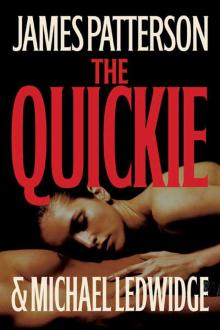 The Quickie
The Quickie Little Black Dress
Little Black Dress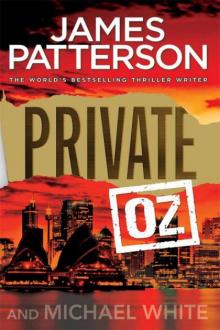 Private Oz
Private Oz Homeroom Diaries
Homeroom Diaries Gone
Gone Lifeguard
Lifeguard Kill Me if You Can
Kill Me if You Can Bullseye
Bullseye Confessions of a Murder Suspect
Confessions of a Murder Suspect Black Friday
Black Friday Manhunt
Manhunt Filthy Rich
Filthy Rich Step on a Crack
Step on a Crack Private
Private Private India
Private India Game Over
Game Over Private Sydney
Private Sydney The Murder House
The Murder House Mistress
Mistress I, Michael Bennett
I, Michael Bennett The Gift
The Gift The Postcard Killers
The Postcard Killers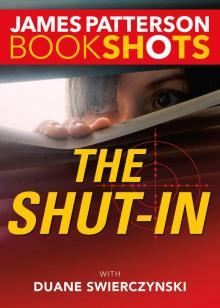 The Shut-In
The Shut-In The House Husband
The House Husband The Lost
The Lost I, Alex Cross
I, Alex Cross Going Bush
Going Bush 16th Seduction
16th Seduction The Jester
The Jester Along Came a Spider
Along Came a Spider The Lake House
The Lake House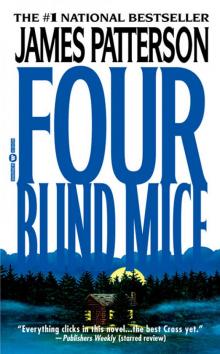 Four Blind Mice
Four Blind Mice Tick Tock
Tick Tock Private L.A.
Private L.A. Middle School, the Worst Years of My Life
Middle School, the Worst Years of My Life Cross Country
Cross Country The Final Warning
The Final Warning Word of Mouse
Word of Mouse Come and Get Us
Come and Get Us Sail
Sail I Funny TV: A Middle School Story
I Funny TV: A Middle School Story Private London
Private London Save Rafe!
Save Rafe! Swimsuit
Swimsuit Sam's Letters to Jennifer
Sam's Letters to Jennifer 3rd Degree
3rd Degree Double Cross
Double Cross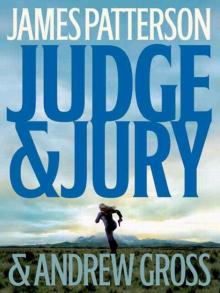 Judge & Jury
Judge & Jury Kiss the Girls
Kiss the Girls Second Honeymoon
Second Honeymoon Guilty Wives
Guilty Wives 1st to Die
1st to Die NYPD Red 4
NYPD Red 4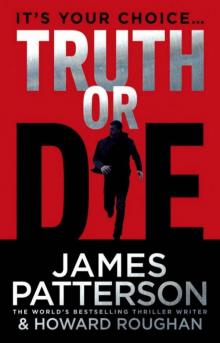 Truth or Die
Truth or Die Private Vegas
Private Vegas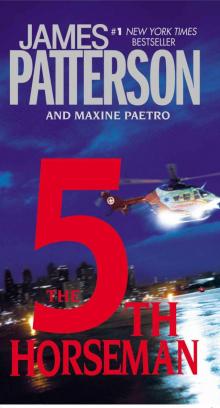 The 5th Horseman
The 5th Horseman 7th Heaven
7th Heaven I Even Funnier
I Even Funnier Cross My Heart
Cross My Heart Let’s Play Make-Believe
Let’s Play Make-Believe Violets Are Blue
Violets Are Blue Zoo
Zoo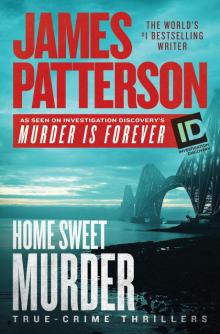 Home Sweet Murder
Home Sweet Murder The Private School Murders
The Private School Murders Alex Cross, Run
Alex Cross, Run Hunted: BookShots
Hunted: BookShots The Fire
The Fire Chase
Chase 14th Deadly Sin
14th Deadly Sin Bloody Valentine
Bloody Valentine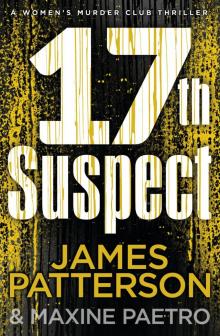 The 17th Suspect
The 17th Suspect The 8th Confession
The 8th Confession 4th of July
4th of July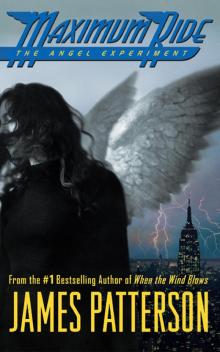 The Angel Experiment
The Angel Experiment Crazy House
Crazy House School's Out - Forever
School's Out - Forever Suzanne's Diary for Nicholas
Suzanne's Diary for Nicholas Cross Justice
Cross Justice Maximum Ride Forever
Maximum Ride Forever The Thomas Berryman Number
The Thomas Berryman Number Honeymoon
Honeymoon The Medical Examiner
The Medical Examiner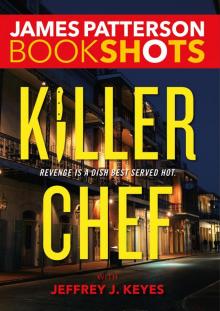 Killer Chef
Killer Chef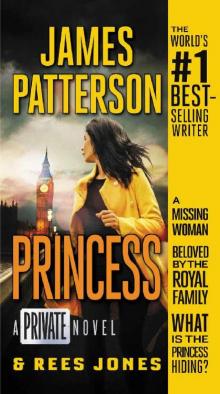 Private Princess
Private Princess Private Games
Private Games Burn
Burn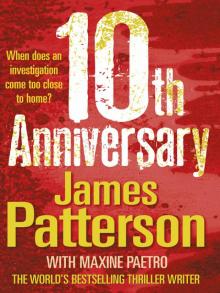 10th Anniversary
10th Anniversary I Totally Funniest: A Middle School Story
I Totally Funniest: A Middle School Story Taking the Titanic
Taking the Titanic The Lawyer Lifeguard
The Lawyer Lifeguard The 6th Target
The 6th Target Cross the Line
Cross the Line Alert
Alert Saving the World and Other Extreme Sports
Saving the World and Other Extreme Sports 1st Case
1st Case Unlucky 13
Unlucky 13 Haunted
Haunted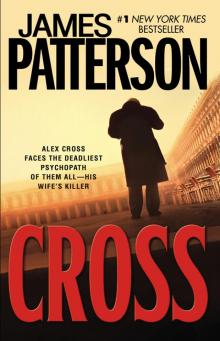 Cross
Cross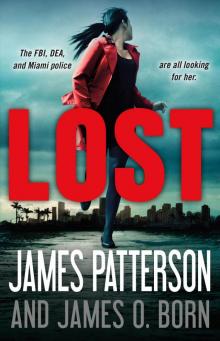 Lost
Lost 11th Hour
11th Hour Bookshots Thriller Omnibus
Bookshots Thriller Omnibus Target: Alex Cross
Target: Alex Cross Hope to Die
Hope to Die The Noise
The Noise Worst Case
Worst Case Dog's Best Friend
Dog's Best Friend Nevermore: The Final Maximum Ride Adventure
Nevermore: The Final Maximum Ride Adventure I Funny: A Middle School Story
I Funny: A Middle School Story NYPD Red
NYPD Red Till Murder Do Us Part
Till Murder Do Us Part Black & Blue
Black & Blue Fang
Fang Liar Liar
Liar Liar The Inn
The Inn Sundays at Tiffany's
Sundays at Tiffany's Middle School: Escape to Australia
Middle School: Escape to Australia Cat and Mouse
Cat and Mouse Instinct
Instinct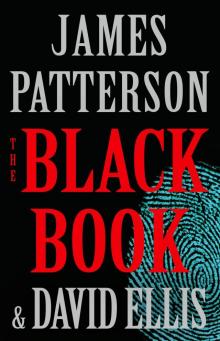 The Black Book
The Black Book London Bridges
London Bridges Toys
Toys The Last Days of John Lennon
The Last Days of John Lennon Roses Are Red
Roses Are Red Witch & Wizard
Witch & Wizard The Dolls
The Dolls The Christmas Wedding
The Christmas Wedding The River Murders
The River Murders The 18th Abduction
The 18th Abduction The 19th Christmas
The 19th Christmas Middle School: How I Got Lost in London
Middle School: How I Got Lost in London Just My Rotten Luck
Just My Rotten Luck Red Alert
Red Alert Walk in My Combat Boots
Walk in My Combat Boots Three Women Disappear
Three Women Disappear 21st Birthday
21st Birthday All-American Adventure
All-American Adventure Becoming Muhammad Ali
Becoming Muhammad Ali The Murder of an Angel
The Murder of an Angel The 13-Minute Murder
The 13-Minute Murder Rebels With a Cause
Rebels With a Cause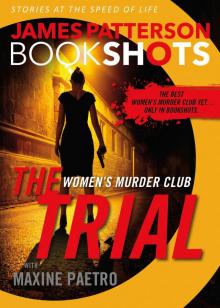 The Trial
The Trial Run for Your Life
Run for Your Life The House Next Door
The House Next Door NYPD Red 2
NYPD Red 2 Ali Cross
Ali Cross The Big Bad Wolf
The Big Bad Wolf Middle School: My Brother Is a Big, Fat Liar
Middle School: My Brother Is a Big, Fat Liar Private Paris
Private Paris Miracle on the 17th Green
Miracle on the 17th Green The People vs. Alex Cross
The People vs. Alex Cross The Beach House
The Beach House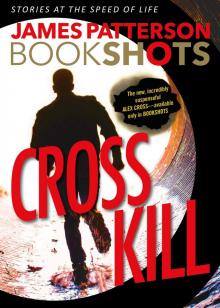 Cross Kill
Cross Kill Dog Diaries
Dog Diaries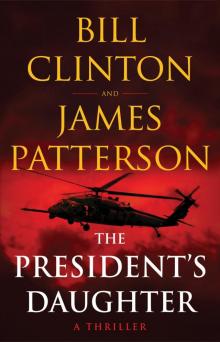 The President's Daughter
The President's Daughter Happy Howlidays
Happy Howlidays Detective Cross
Detective Cross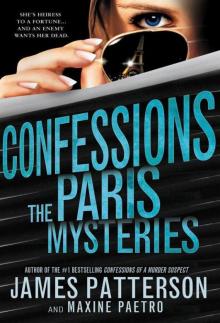 The Paris Mysteries
The Paris Mysteries Watch the Skies
Watch the Skies 113 Minutes
113 Minutes Alex Cross's Trial
Alex Cross's Trial NYPD Red 3
NYPD Red 3 Hush Hush
Hush Hush Now You See Her
Now You See Her Merry Christmas, Alex Cross
Merry Christmas, Alex Cross 2nd Chance
2nd Chance Private Royals
Private Royals Two From the Heart
Two From the Heart Max
Max I, Funny
I, Funny Blindside (Michael Bennett)
Blindside (Michael Bennett) Sophia, Princess Among Beasts
Sophia, Princess Among Beasts Armageddon
Armageddon Don't Blink
Don't Blink NYPD Red 6
NYPD Red 6 The First Lady
The First Lady Texas Outlaw
Texas Outlaw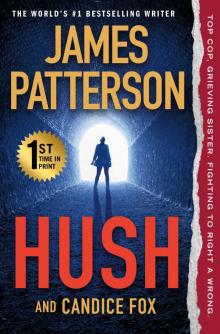 Hush
Hush Beach Road
Beach Road Private Berlin
Private Berlin The Family Lawyer
The Family Lawyer Jack & Jill
Jack & Jill The Midwife Murders
The Midwife Murders Middle School: Rafe's Aussie Adventure
Middle School: Rafe's Aussie Adventure The Murder of King Tut: The Plot to Kill the Child King
The Murder of King Tut: The Plot to Kill the Child King First Love
First Love The Dangerous Days of Daniel X
The Dangerous Days of Daniel X Hawk
Hawk Private Delhi
Private Delhi The 20th Victim
The 20th Victim The Shadow
The Shadow Katt vs. Dogg
Katt vs. Dogg The Palm Beach Murders
The Palm Beach Murders 2 Sisters Detective Agency
2 Sisters Detective Agency Humans, Bow Down
Humans, Bow Down You've Been Warned
You've Been Warned Cradle and All
Cradle and All 20th Victim: (Women’s Murder Club 20) (Women's Murder Club)
20th Victim: (Women’s Murder Club 20) (Women's Murder Club) Season of the Machete
Season of the Machete Woman of God
Woman of God Mary, Mary
Mary, Mary Blindside
Blindside Invisible
Invisible The Chef
The Chef Revenge
Revenge See How They Run
See How They Run Pop Goes the Weasel
Pop Goes the Weasel 15th Affair
15th Affair Middle School: Get Me Out of Here!
Middle School: Get Me Out of Here! Middle School: How I Survived Bullies, Broccoli, and Snake Hill
Middle School: How I Survived Bullies, Broccoli, and Snake Hill From Hero to Zero - Chris Tebbetts
From Hero to Zero - Chris Tebbetts G'day, America
G'day, America Max Einstein Saves the Future
Max Einstein Saves the Future The Cornwalls Are Gone
The Cornwalls Are Gone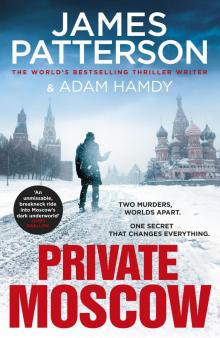 Private Moscow
Private Moscow Two Schools Out - Forever
Two Schools Out - Forever Hollywood 101
Hollywood 101 Deadly Cargo: BookShots
Deadly Cargo: BookShots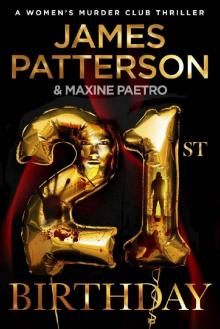 21st Birthday (Women's Murder Club)
21st Birthday (Women's Murder Club) The Sky Is Falling
The Sky Is Falling Cajun Justice
Cajun Justice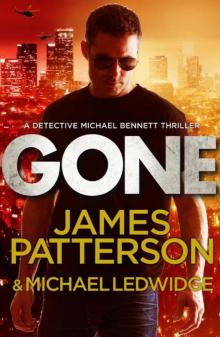 Bennett 06 - Gone
Bennett 06 - Gone The House of Kennedy
The House of Kennedy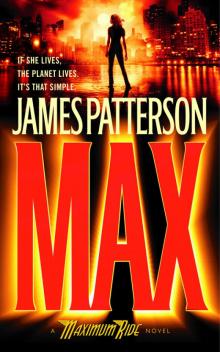 Waterwings
Waterwings Murder is Forever, Volume 2
Murder is Forever, Volume 2 Maximum Ride 02
Maximum Ride 02 Treasure Hunters--The Plunder Down Under
Treasure Hunters--The Plunder Down Under Private Royals: BookShots (A Private Thriller)
Private Royals: BookShots (A Private Thriller) After the End
After the End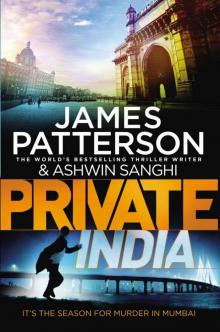 Private India: (Private 8)
Private India: (Private 8)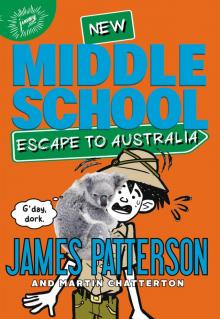 Escape to Australia
Escape to Australia WMC - First to Die
WMC - First to Die Boys Will Be Boys
Boys Will Be Boys The Red Book
The Red Book 11th hour wmc-11
11th hour wmc-11 Hidden
Hidden You've Been Warned--Again
You've Been Warned--Again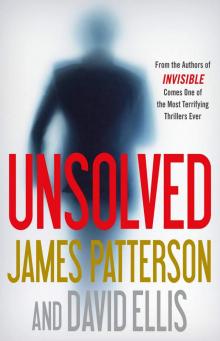 Unsolved
Unsolved Pottymouth and Stoopid
Pottymouth and Stoopid Hope to Die: (Alex Cross 22)
Hope to Die: (Alex Cross 22) The Moores Are Missing
The Moores Are Missing Black & Blue: BookShots (Detective Harriet Blue Series)
Black & Blue: BookShots (Detective Harriet Blue Series) Airport - Code Red: BookShots
Airport - Code Red: BookShots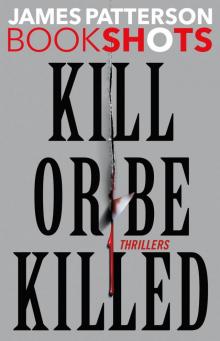 Kill or Be Killed
Kill or Be Killed School's Out--Forever
School's Out--Forever When the Wind Blows
When the Wind Blows Heist: BookShots
Heist: BookShots Murder of Innocence (Murder Is Forever)
Murder of Innocence (Murder Is Forever) Red Alert_An NYPD Red Mystery
Red Alert_An NYPD Red Mystery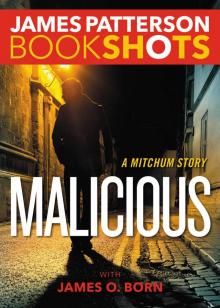 Malicious
Malicious Scott Free
Scott Free The Summer House
The Summer House French Kiss
French Kiss Treasure Hunters
Treasure Hunters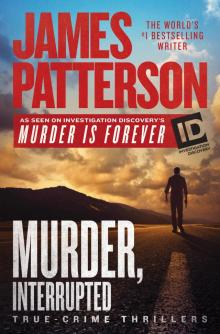 Murder Is Forever, Volume 1
Murder Is Forever, Volume 1 Secret of the Forbidden City
Secret of the Forbidden City Cross the Line: (Alex Cross 24)
Cross the Line: (Alex Cross 24) Witch & Wizard: The Fire
Witch & Wizard: The Fire![Women's Murder Club [06] The 6th Target Read online](http://i1.bookreadfree.com/i/03/24/womens_murder_club_06_the_6th_target_preview.jpg) Women's Murder Club [06] The 6th Target
Women's Murder Club [06] The 6th Target Cross My Heart ac-21
Cross My Heart ac-21 Alex Cross’s Trial ак-15
Alex Cross’s Trial ак-15 Alex Cross 03 - Jack & Jill
Alex Cross 03 - Jack & Jill Liar Liar: (Harriet Blue 3) (Detective Harriet Blue Series)
Liar Liar: (Harriet Blue 3) (Detective Harriet Blue Series) Cross Country ак-14
Cross Country ак-14 Honeymoon h-1
Honeymoon h-1 Maximum Ride: The Angel Experiment
Maximum Ride: The Angel Experiment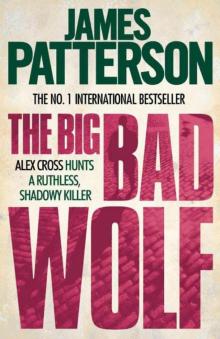 The Big Bad Wolf ак-9
The Big Bad Wolf ак-9 Dead Heat: BookShots (Book Shots)
Dead Heat: BookShots (Book Shots)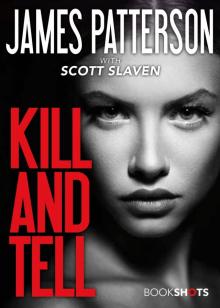 Kill and Tell
Kill and Tell Avalanche
Avalanche Robot Revolution
Robot Revolution Public School Superhero
Public School Superhero 12th of Never
12th of Never Max: A Maximum Ride Novel
Max: A Maximum Ride Novel All-American Murder
All-American Murder Murder Games
Murder Games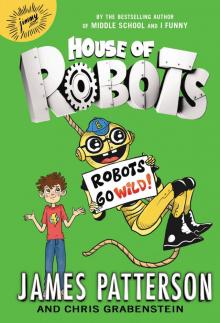 Robots Go Wild!
Robots Go Wild! My Life Is a Joke
My Life Is a Joke Private: Gold
Private: Gold Demons and Druids
Demons and Druids Jacky Ha-Ha
Jacky Ha-Ha Postcard killers
Postcard killers Princess: A Private Novel
Princess: A Private Novel Kill Alex Cross ac-18
Kill Alex Cross ac-18 12th of Never wmc-12
12th of Never wmc-12 The Murder of King Tut
The Murder of King Tut I Totally Funniest
I Totally Funniest Cross Fire ак-17
Cross Fire ак-17 Count to Ten
Count to Ten![Women's Murder Club [10] 10th Anniversary Read online](http://i1.bookreadfree.com/i1/03/30/womens_murder_club_10_10th_anniversary_preview.jpg) Women's Murder Club [10] 10th Anniversary
Women's Murder Club [10] 10th Anniversary![Women's Murder Club [01] 1st to Die Read online](http://i1.bookreadfree.com/i1/03/31/womens_murder_club_01_1st_to_die_preview.jpg) Women's Murder Club [01] 1st to Die
Women's Murder Club [01] 1st to Die I, Michael Bennett mb-5
I, Michael Bennett mb-5 Nooners
Nooners![Women's Murder Club [08] The 8th Confession Read online](http://i1.bookreadfree.com/i1/04/03/womens_murder_club_08_the_8th_confession_preview.jpg) Women's Murder Club [08] The 8th Confession
Women's Murder Club [08] The 8th Confession Private jm-1
Private jm-1 Treasure Hunters: Danger Down the Nile
Treasure Hunters: Danger Down the Nile Worst Case mb-3
Worst Case mb-3 Don’t Blink
Don’t Blink The Games
The Games The Medical Examiner: A Women's Murder Club Story
The Medical Examiner: A Women's Murder Club Story Black Market
Black Market Gone mb-6
Gone mb-6![Women's Murder Club [02] 2nd Chance Read online](http://i1.bookreadfree.com/i1/04/04/womens_murder_club_02_2nd_chance_preview.jpg) Women's Murder Club [02] 2nd Chance
Women's Murder Club [02] 2nd Chance French Twist
French Twist Kenny Wright
Kenny Wright Manhunt: A Michael Bennett Story
Manhunt: A Michael Bennett Story Cross Kill: An Alex Cross Story
Cross Kill: An Alex Cross Story Confessions of a Murder Suspect td-1
Confessions of a Murder Suspect td-1 Second Honeymoon h-2
Second Honeymoon h-2 Chase_A BookShot_A Michael Bennett Story
Chase_A BookShot_A Michael Bennett Story Confessions: The Paris Mysteries
Confessions: The Paris Mysteries![Women's Murder Club [09] The 9th Judgment Read online](http://i1.bookreadfree.com/i2/04/08/womens_murder_club_09_the_9th_judgment_preview.jpg) Women's Murder Club [09] The 9th Judgment
Women's Murder Club [09] The 9th Judgment Absolute Zero
Absolute Zero Nevermore: The Final Maximum Ride Adventure mr-8
Nevermore: The Final Maximum Ride Adventure mr-8 Angel: A Maximum Ride Novel mr-7
Angel: A Maximum Ride Novel mr-7 Juror #3
Juror #3 Million-Dollar Mess Down Under
Million-Dollar Mess Down Under The Verdict: BookShots (A Jon Roscoe Thriller)
The Verdict: BookShots (A Jon Roscoe Thriller)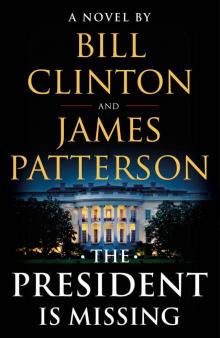 The President Is Missing: A Novel
The President Is Missing: A Novel![Women's Murder Club [04] 4th of July Read online](http://i1.bookreadfree.com/i2/04/06/womens_murder_club_04_4th_of_july_preview.jpg) Women's Murder Club [04] 4th of July
Women's Murder Club [04] 4th of July The Hostage: BookShots (Hotel Series)
The Hostage: BookShots (Hotel Series) $10,000,000 Marriage Proposal
$10,000,000 Marriage Proposal Diary of a Succubus
Diary of a Succubus Unbelievably Boring Bart
Unbelievably Boring Bart Angel: A Maximum Ride Novel
Angel: A Maximum Ride Novel Stingrays
Stingrays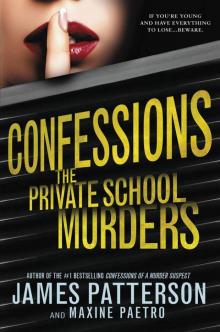 Confessions: The Private School Murders
Confessions: The Private School Murders Stealing Gulfstreams
Stealing Gulfstreams![Women's Murder Club [05] The 5th Horseman Read online](http://i1.bookreadfree.com/i2/04/05/womens_murder_club_05_the_5th_horseman_preview.jpg) Women's Murder Club [05] The 5th Horseman
Women's Murder Club [05] The 5th Horseman Zoo 2
Zoo 2 Jack Morgan 02 - Private London
Jack Morgan 02 - Private London Treasure Hunters--Quest for the City of Gold
Treasure Hunters--Quest for the City of Gold The Christmas Mystery
The Christmas Mystery Murder in Paradise
Murder in Paradise Kidnapped: BookShots (A Jon Roscoe Thriller)
Kidnapped: BookShots (A Jon Roscoe Thriller)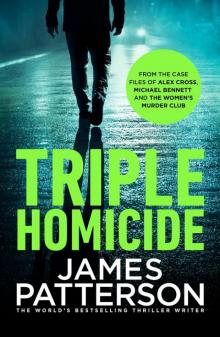 Triple Homicide_Thrillers
Triple Homicide_Thrillers 16th Seduction: (Women’s Murder Club 16) (Women's Murder Club)
16th Seduction: (Women’s Murder Club 16) (Women's Murder Club)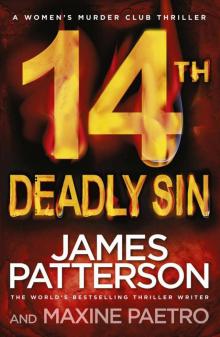 14th Deadly Sin: (Women’s Murder Club 14)
14th Deadly Sin: (Women’s Murder Club 14) Texas Ranger
Texas Ranger Witch & Wizard 04 - The Kiss
Witch & Wizard 04 - The Kiss![Women's Murder Club [03] 3rd Degree Read online](http://i1.bookreadfree.com/i2/04/12/womens_murder_club_03_3rd_degree_preview.jpg) Women's Murder Club [03] 3rd Degree
Women's Murder Club [03] 3rd Degree Break Point: BookShots
Break Point: BookShots Alex Cross 04 - Cat & Mouse
Alex Cross 04 - Cat & Mouse Maximum Ride
Maximum Ride Fifty Fifty: (Harriet Blue 2) (Detective Harriet Blue Series)
Fifty Fifty: (Harriet Blue 2) (Detective Harriet Blue Series) Alex Cross 02 - Kiss the Girls
Alex Cross 02 - Kiss the Girls The President Is Missing
The President Is Missing Hunted
Hunted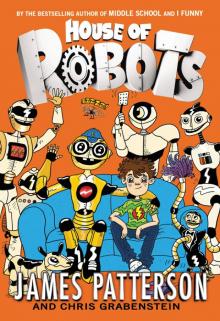 House of Robots
House of Robots Dangerous Days of Daniel X
Dangerous Days of Daniel X Tick Tock mb-4
Tick Tock mb-4 10th Anniversary wmc-10
10th Anniversary wmc-10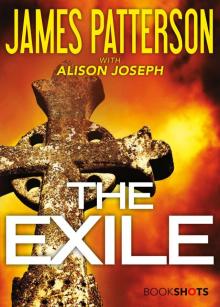 The Exile
The Exile Private Games-Jack Morgan 4 jm-4
Private Games-Jack Morgan 4 jm-4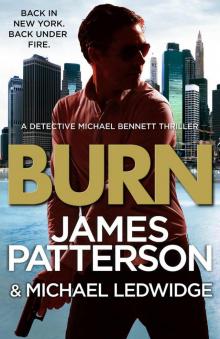 Burn: (Michael Bennett 7)
Burn: (Michael Bennett 7) Laugh Out Loud
Laugh Out Loud The People vs. Alex Cross: (Alex Cross 25)
The People vs. Alex Cross: (Alex Cross 25)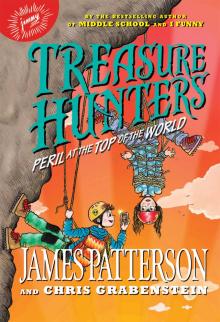 Peril at the Top of the World
Peril at the Top of the World I Funny TV
I Funny TV Merry Christmas, Alex Cross ac-19
Merry Christmas, Alex Cross ac-19 #1 Suspect jm-3
#1 Suspect jm-3 Fang: A Maximum Ride Novel
Fang: A Maximum Ride Novel![Women's Murder Club [07] 7th Heaven Read online](http://i1.bookreadfree.com/i2/04/13/womens_murder_club_07_7th_heaven_preview.jpg) Women's Murder Club [07] 7th Heaven
Women's Murder Club [07] 7th Heaven The End
The End